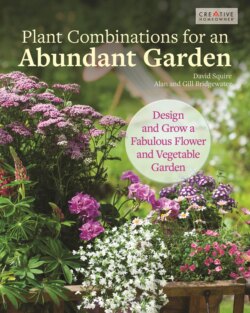Читать книгу Plant Combinations for an Abundant Garden - A. & G. Bridgewater - Страница 8
На сайте Литреса книга снята с продажи.
ENJOYING YOUR GARDEN
ОглавлениеAlthough you might start out with preconceived notions – the garden has to be formal, or you want to grow vegetables, for example – the finished garden will of necessity be a coming-together of what you dream of having and what you actually have on the ground – the location, the size of the plot, the character of your home, and so on. The best way of getting started is to list your needs, think hard about the possibilities, and take things from there.
How do I get the best out of my garden?
YOUR NEEDS
List your needs in order of priority. Your needs might be unspoken, but you probably know absolutely for sure what you don’t want. If this is the case, then list what you don’t want, and then, by a process of elimination, gradually work through to what you would like to have.
THE POSSIBILITIES
Look at the size and location of your plot, and the size of your bank balance, and consider the possibilities accordingly. You might want a huge lake, but if you only have a modest-sized garden, with a modest-sized bank balance to match, it is probably better to modify your “needs” and opt for a good- sized pond.
IMPROVING AND EVOLVING
Gardens generally improve and evolve simply with the passing of time. Plants get bigger, new plants can be grown, lawns can be changed into flower beds, and so on.
Even the smallest patch can be turned into a gentle, soothing haven.
GARDENING STYLES
Although there are only two basic styles of garden, informal and formal, there are many variations on these styles. For example, you could have an informal cottage- orchard type garden, or an informal wild garden. Much the same goes for a formal garden. You could have a classic garden with all the features relating to a symmetrical ground plan, or you could have a Japanese garden that is formal in its layout.
INFORMAL
A natural patio complete with apple trees and meadow grass.
Wildlife areas introduce a new dimension to gardening, and are perfect for a small, quiet, out-of-the-way position.
FORMAL
A small formal garden which has been designed so that the plants can easily be changed to follow the seasons.
A single stone ball can be an eye-catching feature.
THEMED
Areas of gravel create the perfect base for a Japanese garden.
